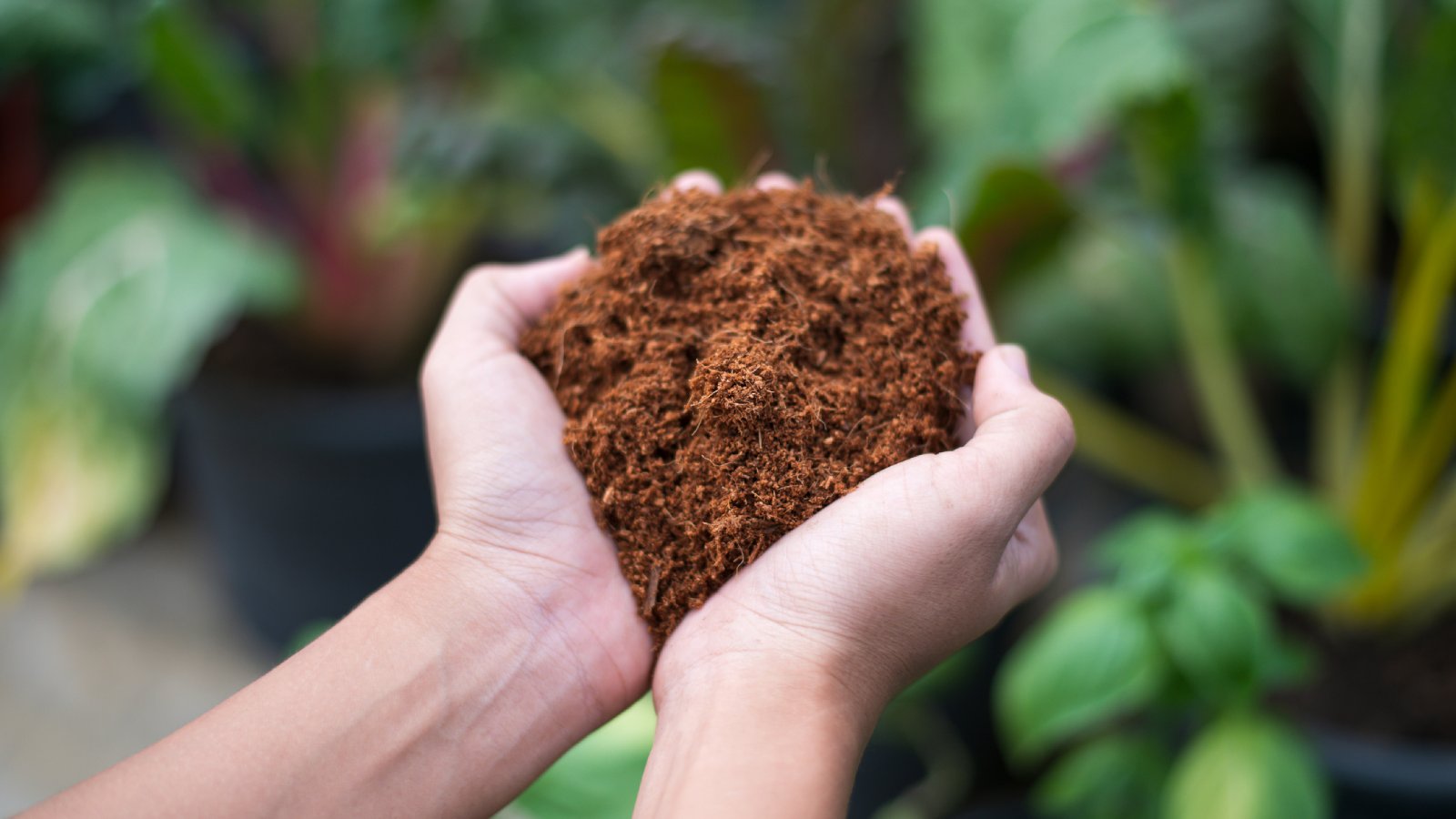Peat Moss Vs. Coco Coir: Pros And Cons To Consider
Much more sustainable than peat moss, coco coir does just as well at amending soil without creating an ecological impact.


Peat moss vs. coco coir. How do these two soil amendments compare? Many gardeners were told by their parents and grandparents that adding peat moss to garden and potting soil improves the soil structure. But today ecologists tell us that peat moss is being harvested for this use at non-sustainable rates. Coco coir, (aka coco dust, coco fiber, or coconut coir mulch) is proposed as an alternative.
So let’s look at coco fiber vs. peat moss. Will coco coir actually do the job? The simple answer is yes, but read on for the details.
Peat Moss vs. Coco Coir
The question of coco coir vs. peat moss is more than an issue of which is more effective as a soil amendment. There are bigger things at play here.
Let’s start by looking at these two materials and where they come from. That’s critical because the main advantage of coco coir is that it is not endangered. Peat takes hundreds of years to form and plays a vital role in a wetland's ecosystem. Coco coir is often tossed as detritus.
Peat Moss Pros and Cons
We all are aware of the value of wetlands as ecosystems. They support a multitude of plant and animal life. Peat comes from peat bogs, which are a special kind of wetlands. Occupied by peat mosses, peat bogs acidify the wet soil to the point that only acid-loving plants can thrive there, including unique, carnivorous plants like pitcher plants and Venus fly-traps.
Bacterial decomposition is slowed by the acidity, so as the centuries pass, layers of peat moss are squeezed and compressed into the substance called peat. But there is a limited amount of peat, and more of it is being extracted and used commercially than is being produced.
When peat is extracted from the bog and added to garden soil, it improves the structure of the soil. However, take note: peat does not act as a fertilizer or add any nutrients. Rather, it amends the soil, making it lighter so that air can enter, and the soil can be moist without getting soggy. This helps plants to grow.
Gardening tips, videos, info and more delivered right to your inbox!
Sign up for the Gardening Know How newsletter today and receive a free copy of our e-book "How to Grow Delicious Tomatoes".
Peat moss aerates soil well and is easy to buy in commerce, since it comes from Canada. On the other hand, it is extremely acidic, and once it is wet, it is hard to wet again.
Coco Coir Pros and Cons
So where does coco coir come from? It may not surprise you that it comes from coconut palm trees. Coconuts are harvested and husked before being sold commercially. During this process, the longer fibers are sold for use in upholstery stuffing, rope, and brushes. What about the short fibers? This substance used to be considered detritus and tossed, but today is used in gardening as coconut coir or coco peat. Coir, then, is a renewable resource and its new role in gardening makes constructive use out of a waste product.
Coir holds moisture well and rehydrates easily. Like peat, it is low in nutrients, but works well as a soil amendment. It is less acidic, closer to neutral in pH value. On the down side, it is shipped from overseas and is more difficult to buy in bulk.
Which One Is Better?
Comparing coco coir vs peat moss in terms of practicality for horticulture, both products work well. Coir wets more easily than peat, drains well, and withstands compression better than peat. In addition, it has none of the peat bog detritus that peat has.
But given the differences in ecological impact, there can be no question that in the peat moss vs. coco peat balance, it is far better to buy coco coir than peat.

Teo Spengler is a master gardener and a docent at the San Francisco Botanical Garden, where she hosts public tours. She has studied horticulture and written about nature, trees, plants, and gardening for more than two decades. Her extended family includes some 30 houseplants and hundreds of outdoor plants, including 250 trees, which are her main passion. Spengler currently splits her life between San Francisco and the French Basque Country, though she was raised in Alaska, giving her experience of gardening in a range of climates.
-
 10 Common Composting Problems That Can Spoil Your Garden Gold – Plus Easy Fixes
10 Common Composting Problems That Can Spoil Your Garden Gold – Plus Easy FixesLearn how to troubleshoot common composting issues before they ruin your stash – from bad smells and bugs to materials not breaking down as they should.
By Susan Albert
-
 Terrifically Tubular Flowers For Hummingbirds: 9 Tube-Flowered Plants To Attract Hummers
Terrifically Tubular Flowers For Hummingbirds: 9 Tube-Flowered Plants To Attract HummersGrowing tubular flowers for hummingbirds helps you create the optimum feeding conditions for your winged friends. Here are nine tubed delights for hummers
By Tonya Barnett